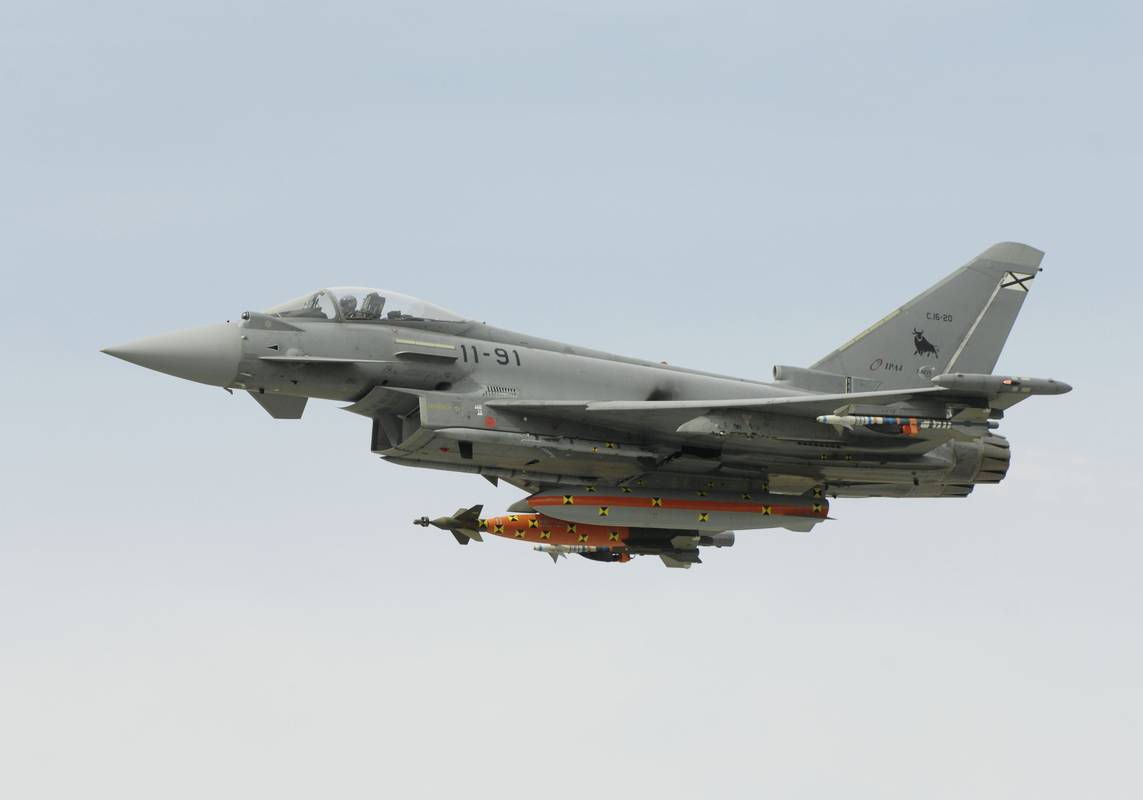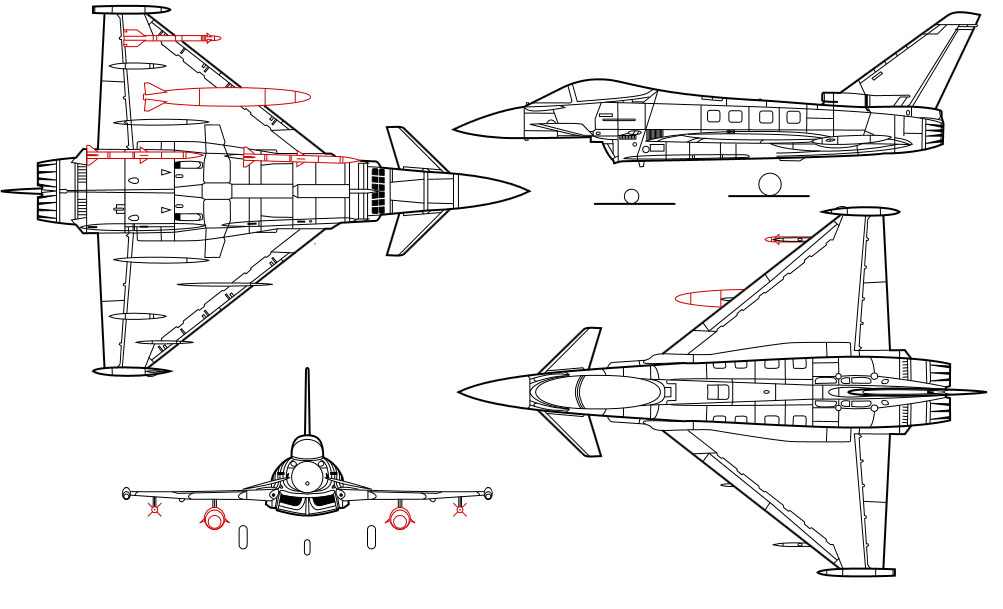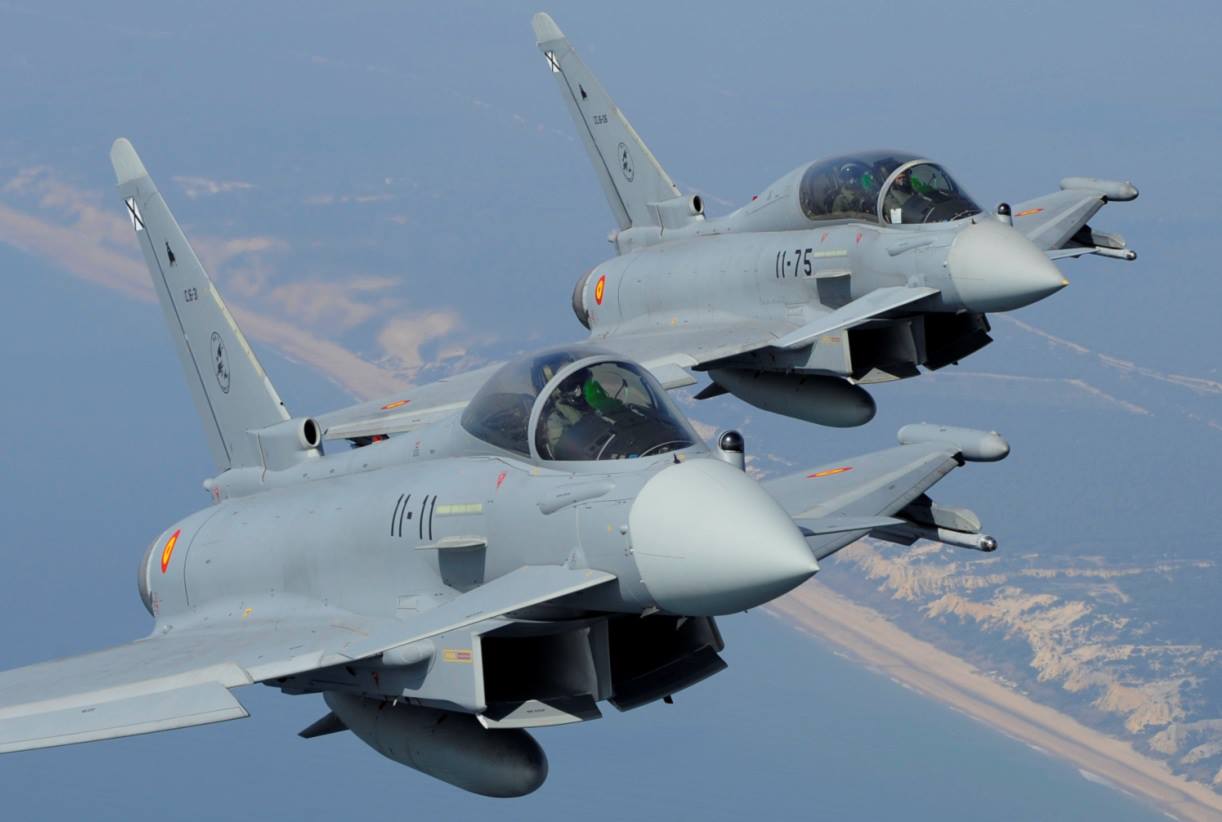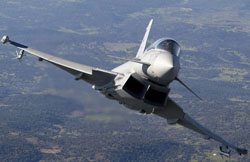REAL HISTORY AND DEVELOPMENT
The project was initiated by a technical requirement from several countries to replace the SEPECAT Jaguar, Panavia Tornado, McDonnell Douglas F-4 Phantom II, Lockheed F-104 Starfighter and Dassault Mirage F1 of various European air forces. The trigger for the appearance of this new fighter was, among others, the information that was being received about the new Soviet prototypes RAM-K and RAM-L, which would later be known as Su-27 Flanker and MiG-29 Fulcrum. The aircraft was designed taking into account the technical requirements of the air forces of some NATO members such as Germany, France and the United Kingdom. However, the French Air Force soon abandoned the project as it wanted to build a custom-made aircraft where Dassault would lead the design and the other partners would limit themselves to jointly financing the project. Furthermore, the Armée del Air was not satisfied with designs such as the TFK. -90 or the P110.B, on which the Eurofighter is based, preferring a somewhat smaller and embarkable aircraft, so France abandoned the European aircraft project, to create its own fighter, the ACX (acronym for Avion de Combat Experimental), which would later become known as Rafale A.
Thus, in 1982 the ACA (Agile Combat Aircraft) program was presented in which Italy, Germany and the United Kingdom appeared as partners. An attempt was made to create a program for a technological demonstrator called EAP (Experimental Aircraft Programme), but the British government did not finance it and in the end it had to be BAe (British Aerospace) itself that financed the project, taking advantage of parts such as the tail section of the Tornado and its RB199 engines. The EAP made its first flight in 1986 and was immediately successful. There were some voices that wanted that same aircraft to enter service in the Royal Air Force (RAF), but the development of the more conservative Tornado F.Mk3 stopped the financing of the project. However, at that time Germany was also developing the . The Eurofighter is largely based on technologies tested in the EAP.

Spain joined the project on September 2, 1985, although it had already followed the evolution of events with interest. From then on, the project was known as EFA (European Fighter Aircraft) and several consortia were formed to produce the various parts of the Eurofighter aircraft: for the airframe and systems integration, for the Eurojet engines, for the EuroDASS security system, etc. . From then on, the project suffered a halt due to the end of the Cold War and the high costs of German reunification, which meant that the project was delayed for about five years. Meanwhile, the partners were discussing how to reduce the price of the aircraft, as well as the overall cost of the program, by eliminating aircraft systems (for example, the very expensive protection against pulses of electromagnetic radiation), or reducing the number of prototypes. Finally, on March 27, 1994, the first DA01 prototype flew from the MBB factory in Manching piloted by test pilot Peter Weger. For 8 years, the seven prototypes of the program flew numerous hours to reach the manufacturing phase at the beginning of 2001.
The project has been named and renamed several times since its birth, being known as EFA (European Fighter Aircarft), Eurofighter, EF2000 (Eurofighter 2000) and Typhoon. The Typhoon’s features are a good example of its development. The Typhoon’s airframe was designed to be unstable in flight (with canards and truncated delta wing), giving it great maneuverability. To solve the problem of instability, a quadruple redundant Fly-by-wire flight control system is used.

In turns, it maintains energy perfectly by having a thrust-to-weight ratio of 1.15, in addition to the fact that the EJ200 engines allow it to fly in supercruise regime (ability to fly at supersonic speeds without using afterburners). The aircraft is largely made of compounds such as fiberglass or carbon fiber, which provide greater structural rigidity to the airframe, allowing it to perform maneuvers with very high G-force values.
The ejection seat is of the Cero-Cero type, built by manufacturer Martin Baker, and is capable of ejections at more than 600 knots of speed (approximately 1,100 km/h). Despite not seeking low detectability characteristics as a requirement, as the F-22 Raptor has done, the Typhoon has its shape well taken care of to try to be as little detectable as possible to radar illumination.
The combat performance of the Typhoon, comparing it in particular to the American F-22 Raptor and F-35 Lightning II and the French Dassault Rafale, has been the subject of much discussion. Although making completely truthful and unbiased comparisons is impossible with the publicly available information, there is a study by the United Kingdom’s Defense Evaluation and Research Agency comparing the Typhoon with other contemporary fighters; In this study the Typhoon was second only to the F-22. (Source: Wikipedia)
NOW
The Eurofighter Typhoon is the star fighter-bomber of the Spanish Air Force. Currently, it has three combat squadrons. Two operate from the Morón base and the third from Los Llanos.
- Squadron 111 – Diablos de Hispania
- Squadron 112 – Tartessos
Squadron 111 – Diablos de Hispanía has achieved international renown for its expertise at the controls of the Eurofighter Typhoon, being the only ones to have flown this aircraft in combat and surveillance operations in scenarios such as Iraq, Afghanistan or Libya. When they are not on official missions, the Eurofighter Typhoons from the Morón base can be seen in numerous areas of southern Andalusia, where they carry out routine maneuvers and exercises.

Without a doubt, the Eurofighter Typhoon has become the main bulwark of the Air Force, gradually replacing the American F-18 and the French Mirage F-1. It is clear that if one day Spain entered into an aerial conflict, the Eurofighters would be the main actors that would defend the skies of the Iberian Peninsula.

